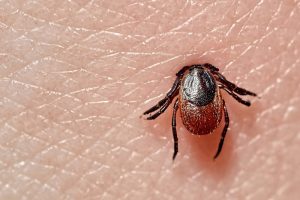Uncover the essential facts about Bartholin’s cysts, a common yet often misunderstood condition affecting women’s reproductive health.
Bartholin’s cysts, also known as Bartholin gland cysts, are fluid-filled sacs that develop in the Bartholin’s glands. Located at the vaginal opening, these glands play a crucial role in female reproductive health.
Bartholin gland cysts account for 2% of all gynaecological visits annually. The treatment of these cysts has significantly evolved, transitioning from complex, invasive procedures requiring general anaesthesia to simpler, office-based methods such as puncture and drain placement.
The diagnosis and management of Bartholin’s cysts can be challenging due to potential complications. These include the differentiation of simple cysts from abscesses and malignant tumours. Recurrent cysts further complicate treatment.
Abscesses, which various organisms, including Escherichia coli and Staphylococcus aureus, can cause, do not always have a preceding cyst. Suspicion for malignancy should arise if the Bartholin gland enlarges in women over 40, requiring biopsy or excision.
Causes and Risk Factors of Bartholin’s Cysts
Bartholin’s cysts typically develop when the duct of the Bartholin gland becomes obstructed, leading to fluid accumulation. While the specific causes of this blockage are not entirely clear, it is believed that backup of fluid due to infection or injury plays a significant role.
Risk factors for Bartholin’s duct abscess and cyst include age and ethnicity, with a higher prevalence observed in women aged 20 to 29 compared to those under 20. The risk is relatively weaker in women in their 30s and 40s. Additionally, non-Hispanic white and black women are at a greater risk.
In terms of diagnosis, Bartholin’s cysts are often identified through a physical examination. Imaging modalities like MRI can be utilised for diagnosis, showing features characteristic of a Bartholin gland cyst.
Symptoms and Diagnosis
Bartholin’s cysts can vary in size and may not always exhibit noticeable symptoms. However, when they do, common symptoms include:
- A tender lump or mass near the vaginal opening.
- Discomfort while walking or sitting.
- Pain during sexual intercourse.
- Fever, particularly when the cyst becomes infected.
Diagnosis involves a thorough medical evaluation, which may include:
- Reviewing the patient’s medical history.
- A pelvic examination.
- Testing of vaginal or cervical secretions for sexually transmitted infections.
- In postmenopausal women or those over 40, healthcare providers may recommend a biopsy to rule out cancerous cells.
The appropriate treatment depends on factors such as the cyst’s size, symptoms, and infection status. Treatment options include:
- Observation and no treatment for small, asymptomatic cysts.
- Sitz baths for small, infected cysts to relieve discomfort.
- Surgical drainage for larger or infected cysts.
- Antibiotics if infection is present.
- Marsupialisation, a surgical procedure, for recurrent cysts.
In rare cases where other treatments fail, surgical removal of the Bartholin’s gland may be recommended.
Bartholin’s cysts or abscesses can recur, necessitating repeated treatment. While there is no foolproof way to prevent these cysts, adopting safer sex practices, using condoms, and maintaining good hygiene can help reduce the risk of infection and abscess formation.
Management of Symptomatic Cysts
The management of symptomatic is patient-specific and depends on factors such as size, symptoms, and the presence of infection.
There is no one-size-fits-all surgical intervention recommended, as various techniques have shown similar effectiveness. Accurate diagnosis and tailored treatment plans are crucial, requiring regular gynaecological consultations.
Bartholin’s cysts can be uncomfortable and painful, but with the right diagnosis and treatment, individuals can find relief. Understanding the symptoms, causes, and available treatment options is essential for managing this condition effectively. If you suspect you have a Bartholin’s cyst, seek medical advice promptly to determine the best course of action for your specific situation.
References
- Marzano, D., & Haefner, H. K. (2004, July 1). The Bartholin Gland Cyst: Past, Present, and Future. Journal of Lower Genital Tract Disease; Lippincott Williams & Wilkins. https://doi.org/10.1097/00128360-200407000-00006
- Omole, F. (2019, June 15). Bartholin Duct Cyst and Gland Abscess: Office Management. AAFP. https://www.aafp.org/pubs/afp/issues/2019/0615/p760.html
- Aghajanian, A., Bernstein, L., & Da, G. (1994, January 1). Bartholinʼs Duct Abscess and Cyst. Southern Medical Journal; Lippincott Williams & Wilkins. https://doi.org/10.1097/00007611-199401000-00006













